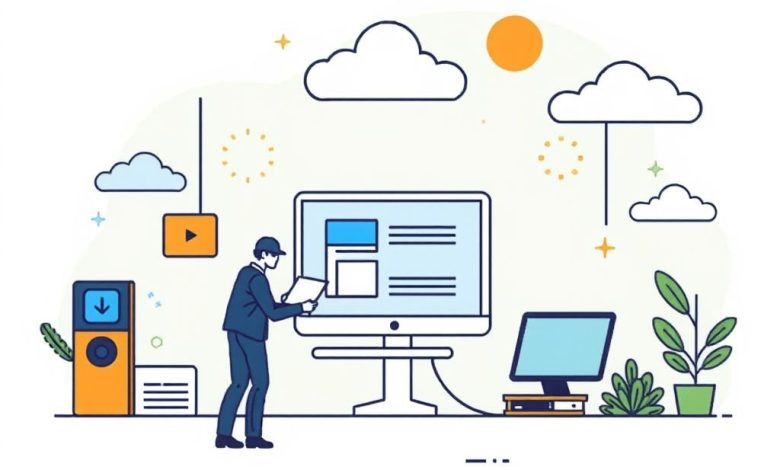Field Service Management with Third-Party Portal Control Enhancing Operational Efficiency and Customer Experience

Introduction
Field Service Management (FSM) is a critical component of modern business operations, particularly for companies that rely heavily on mobile workforce management. As technology continues to advance, FSM systems have evolved to incorporate third-party portal control, enhancing efficiency and customer satisfaction. This article explores the concept of FSM with third-party portal control, its benefits, challenges, and best practices for implementation.
What is Field Service Management?
Field Service Management refers to the processes and systems used to manage and coordinate work performed outside of a traditional office environment. It encompasses various aspects of field operations, including scheduling, dispatching, resource allocation, and performance tracking. FSM helps organizations streamline their field-based activities, improve response times, and enhance overall operational efficiency.
Key Components of Field Service Management
- Scheduling and Dispatching
- Automated scheduling algorithms
- Real-time job assignment
- Route optimization
2. Resource Allocation
- Technician management
- Vehicle tracking
- Inventory control
3. Customer Interaction
- Appointment booking
- Estimated arrival time communication
- Feedback collection
4. Performance Monitoring
- Job completion tracking
- Quality assurance
- Time and material reporting
The Role of Third-Party Portal Control in Field Service Management
Third-party portal control in FSM refers to the integration of external platforms or services into the core FSM system. This integration allows for enhanced functionality, improved data sharing, and increased collaboration between different stakeholders. Some common examples of third-party portals used in FSM include:
- Customer Relationship Management (CRM) Systems
- Salesforce, HubSpot, Microsoft Dynamics 365
2. Project Management Tools
- Trello, Asana, Jira
3. Time Tracking Apps
- Harvest, Toggl, Clockify
4. Inventory Management Software
- TradeGecko, Zoho Inventory, SAP Business One
Benefits of Third-Party Portal Control in FSM
- Improved Data Integration
- Seamless sharing of customer information between systems
- Enhanced decision-making capabilities
2. Increased Efficiency
- Automated workflows across multiple platforms
- Reduced manual data entry
3. Better Customer Experience
- Real-time updates through integrated portals
- Simplified communication channels
4. Enhanced Collaboration
- Shared access to job details and schedules
- Improved team coordination
Challenges in Implementing Third-Party Portal Control
While third-party portal control offers numerous benefits, it also presents several challenges:
- Integration Complexity
- Ensuring seamless data flow between systems
- Addressing compatibility issues with different platforms
2. Security Concerns
- Protecting sensitive customer and company data
- Managing access permissions across multiple portals
3. Cost Considerations
- Licensing fees for additional software
- Potential increase in IT support requirements
4. Training and Adoption
- Educating staff on new system interfaces
- Overcoming resistance to change
Best Practices for Implementing Third-Party Portal Control in Field Service Management
To successfully integrate third-party portals into your FSM system, consider the following best practices:
- Conduct Thorough Analysis
- Assess current processes and pain points
- Identify specific needs and goals for integration
2. Choose Compatible Platforms
- Select tools that align with your business objectives
- Ensure API compatibility between systems
3. Develop Comprehensive Implementation Plan
- Create a phased rollout strategy
- Allocate sufficient resources for training and support
4. Prioritize Data Security
- Implement robust encryption methods
- Regularly audit access permissions
5. Foster User Adoption
- Provide clear instructions and training materials
- Encourage feedback and continuous improvement
6. Monitor Performance Metrics
- Track key performance indicators (KPIs) before and after implementation
- Adjust strategies based on observed results
Conclusion
Field Service Management with third-party portal control represents a significant advancement in operational efficiency and customer satisfaction. By leveraging integrated systems and platforms, organizations can streamline their field-based activities, improve decision-making capabilities, and enhance overall competitiveness.
As technology continues to evolve, it’s crucial for field service managers to stay informed about emerging trends and best practices in FSM. By embracing innovative solutions like third-party portal control, businesses can position themselves at the forefront of industry standards and deliver exceptional service to their customers.
Remember, successful implementation requires careful planning, thorough analysis, and a commitment to ongoing improvement. As you navigate the complex landscape of FSM with third-party portal control, always keep your focus on enhancing operational efficiency, improving customer experience, and driving long-term business success.




